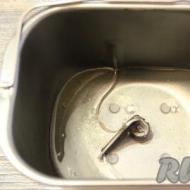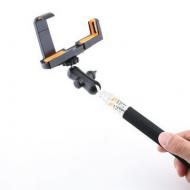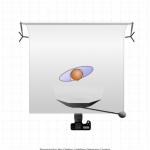
Which gearbox is better: manual (manual) or automatic (automatic)? What box for hyundai ix35
Puzzled by the problem of changing the oil in the Hyundai ix35? No problem! Gearbox - automatic (or automatic transmission). The manufacturer himself makes a rather loud statement that "the oil filled is designed for the entire life of the car." It is obvious that a different meaning is hidden under such a phrase: "The service life is identically equal to the warranty period." The gearbox itself, installed in the Hyundai ix35, has a documented warranty of 120 thousand kilometers. However, it is worth getting acquainted with the opinions of experts and just responsible drivers, as it immediately turns out to be a very interesting point - an oil change is not only recommended, but also mandatory every, maximum , 70 thousand kilometers.
The most common reasons for changing the oil by drivers of the designated brand and manufacturer are:
- Sufficient love for the vehicle, master's attitude. And, as a result, the opinion is that after runs of tens of thousands of kilometers, the automatic transmission is more likely to have “working out” than oil suitable for further operation;
- Dynamic driving style, frequent craving for acceleration, speed limit on highways in the region of 150 kilometers per hour, sometimes more;
- Reluctance to operate the car hundreds of thousands of miles. Unwillingness to hear the phrase from buyers by the end of the warranty period: "Something is pulling." The opinion that it is better to give a small amount in the present than to pay it in the future, but multiplied by 10.

Oil change process options
There are several ways to change the oil on a Hyundai ix35. The first one, which will be offered by relatively most auto repair shops for the designated Hyundai model, will be as follows: the replacement is done by draining the “workout”, then filling the system with volumes of new oil approximately 5 liters. Then the procedure is repeated after half an hour. At a price, this option can vary, depending on the regions, from 3 to 5 thousand. If you evaluate this method, then this is not the most popular and recommended option. oil change in transmission and engine. The replacement process in this case is as follows:
- selection of oil depending on the manufacturer's recommendations, which are determined by referring to special catalogs;
- replacement oil filter;
- removal of "working out" by means of a special probe with a tube and a probe (such a device allows you to remove all unnecessary impurities and sediments, this is explained by the fact that the device works by creating a vacuum in the exhaust device);
- the use of special liquids for washing;
- when the used oil is completely removed, fresh oil is added, as well as a concomitant check of the car's performance.

I would like to emphasize that certain workshops offer some stages of hardware replacement at the discretion of the driver. So, replacing the filter and using cleaning compounds are not mandatory steps. It is also important to figure out which oil is used in the transmissions of the Hyundai ix35 series. In addition, it should be understood that the price of a hardware replacement when using additional services offered by car workshops increases in proportion to the list of work performed. There is also a third method, which is commonly called “replacement through traffic jams”, it is as follows: the car is pre-started, in parallel with this, the old oil is drained and fresh is instantly topped up. At the same time, the box "chases" on suspended wheels. It is worth noting that this replacement method is only suitable for models purchased from scratch and having a mileage of no more than 40 thousand kilometers. The reason is that fresh oil with a high base number will instantly come into contact with the box, which is fraught with adverse consequences.
What oil is better to fill in a Hyundai ix35 automatic transmission
An important point will be the correct filling of oil, ideal for models with automatic transmission. Especially if for some reason the owner decides to replace it on his own, because auto repair shops often have special catalogs that guide the craftsmen when changing the oil in the engines and transmissions of certain cars. Specifically, to replace the Hyundai ix35 oil, it is recommended to purchase one of proposed types.
The Korean-made Hyundai ix35 is equipped with a six-speed automatic transmission. Sometimes the automatic transmission creates tangible shocks that occur when switching.
The peculiarity of driving with automatic transmission Hyundai ix35 is manifested in a decrease in the intensity of speed after switching. Some drivers who were unfamiliar with this behavior of the car came to the conclusion that this was a defect in the model. In this case, many recommend changing the oil. In fact, it won't change anything.
Such a loss of power is associated with the technological feature of the automatic transmission - the machine makes the transition from one speed to another and, as a result, the speed decreases. If the engine is powerful, then such a transition is almost imperceptible.
Oil change according to the recommendation of the manufacturer is not carried out at the entire stage of operation vehicle. Practice shows something completely different. When passing 100 thousand km, it is recommended to change the oil. In addition, professionals advise checking the oil level every 30-50 thousand kilometers.
An automatic transmission oil change can be carried out: partially, conditionally partially or completely. The first means that the liquid is drained only from the sump, while the oil filter and seal gasket are replaced. 
In this case, the oil is poured out by half. Conditionally partial replacement means that the oil is replaced with a new one, a filter is installed, and the magnet is checked.
If you change the oil completely, then you need to stock up on 10 liters, for partial replacement five is enough. It is necessary to fill in the Hyundai ix35 machine box with ATF SP-IV MOBIS 0450000115. You can also use oil analogues.
Before using this type of oil, it is necessary to consult with specialists. Checking the presence of oil in the box is quite difficult, since there is no dipstick. This can only be done through the filler hole. There will be a sufficient amount if the oil reaches the lower edge of this hole.

Automatic transmission has different characteristics. The positive ones include: comfort; no choice needed desired gear, which allows the driver to fully concentrate on the road; increases the resource of using the chassis; has a passive safety system.
The disadvantages of automatic transmission are: low efficiency compared to a manual transmission; lower dynamic performance; Despite the presence of shortcomings, drivers still prefer a car with automatic transmission.
Fuel consumption
Many motorists are interested in the issue of fuel consumption. Most take as a basis the consumption of 10 liters per 100 km. If this figure is greater, then this is considered a large expense. Over the past few years, fuel consumption of six liters has been recognized as optimal and economical. According to the manufacturer, Hyundai ix35 consumes from 5.7 to 8.8 liters per 100 km, depending on operating conditions and driving style. Hyundai engines ix35 run on 2 types of fuel: diesel and gasoline. 
This type of crossover is recognized as a budget version and represents a variation of the 2004 Hyundai Tucson. It is also worth noting that the first release of the car was equipped with a hydrogen version, which was especially widespread in Europe.
| Type of fuel | Generation | Power | Drive unit | Acceleration time | Fuel consumption per 100 km. |
|---|---|---|---|---|---|
| Petrol | 1(2010-2014) | 150 HP | full | 11.3 sec. | 10,6/6,8 |
| Diesel fuel | 1 | 184 HP | full | 10.1 sec. | 9,1/6 |
| Petrol | Restyling 1st generation | 150 HP | full | 11.3 sec. | 10,6/6,8 |
| Petrol | 2013-2015 | 150 HP | front | 10.6 sec. | 10/6,4 |
| Diesel | 2013-2015 | 136 HP | full | 12.1 sec. | 8,6/5,8 |
| Diesel | 2013-2015 | 184 HP | full | 10.1 sec. | 9,1/6 |
To reduce fuel consumption, experts advise following a number of the following tips:
- Pay attention to aerodynamic drag.
- Do not open windows while driving.
- Comply with the requirements that apply to tires and rims.
- Do not skip the diagnostics of the car and, if necessary, change the oil, clean the filters, do not delay the repair.
 According to motorists, fuel consumption by car can reach 12 liters per 100 kilometers in the city. Basically, the numbers given by real motorists differ from those stated by the manufacturer.
According to motorists, fuel consumption by car can reach 12 liters per 100 kilometers in the city. Basically, the numbers given by real motorists differ from those stated by the manufacturer.
Common Problems
It should be noted that in a Hyundai ix35 car, various signs of malfunctions in the automatic transmission are sometimes found. If there are shocks when shifting gears, you need to pay attention to the valve body. Moreover, it is at first hardly noticeable, and then the intensity increases.
There is no possibility of changing the mode in the automatic transmission. In this case, driving a car is impossible, you need to call a tow truck, otherwise it will happen serious breakdown drive and automatic transmission.
Sometimes an automatic sensor signals a problem. A malfunction occurs if there is little oil in the box or it has overheated. But it should be noted that such signals are not accurate and only a professional can determine what kind of breakdown has occurred with the help of computer diagnostics.
The ingress of water and dirt can damage the slot elements. If this is not eliminated in time, then when the car passes 50-100 thousand km, this automatic transmission element will be destroyed and the intermediate shaft and internal CV joint will have to be changed. The hardware holding the countershaft support bearing may fail.
After passing the car 100-150 thousand km, problems may arise in the transfer case and differential cup. It is also possible strong leakage of the clutch seal. The outboard bearing of the driveshaft can buzz after 80-140 thousand km. 
Automatic transmission repair on Hyundai ix35: is it possible
If the behavior of the box is not abnormal, then a mandatory diagnosis is needed. O possible breakdowns may indicate:
- Slip.
- The appearance of an alarm.
- Appeared trembling.
- The appearance of shocks when switching to another speed.
- Hitting the gearbox.
- The appearance of extraneous noise.
 If there is a problem of a serious nature with the automatic transmission, then it is eliminated only after opening the gearbox. You need to remove it from the car first. It is impossible to repair an automatic transmission on your own. Experienced professionals will replace worn parts, which will help restore the operation of the automatic transmission. It is important to note that the repair of automatic transmission is a complex and expensive process.
If there is a problem of a serious nature with the automatic transmission, then it is eliminated only after opening the gearbox. You need to remove it from the car first. It is impossible to repair an automatic transmission on your own. Experienced professionals will replace worn parts, which will help restore the operation of the automatic transmission. It is important to note that the repair of automatic transmission is a complex and expensive process.
When checking the machine in the service center, several types of diagnostics are carried out:
- Fast. This type of verification is usually free of charge. It can also be done by a beginner. This is adding oil to the automatic transmission. Some motorists prefer to replace the oil with a ZIC analogue with a PAO base.
- The pallet is removed. Also, experts can check the automatic transmission using a hundred test. At this level, diagnostics are inexpensive.
- If an emergency occurs with the automatic transmission, then it is necessary to disassemble the box and replace the clutch of the gas turbine engine.
If you have problems with the automatic transmission, you need to know why this is happening. The table shows some malfunctions associated with automatic transmission on the Hyundai ix35.
Malfunctions and their causes
| signs | The reasons |
|---|---|
| The car is stationary, reverse speed is only in working mode. | Faulty friction discs; coupling and ring malfunctions; the valve is stuck in the hydraulic block. |
| On a long climb at the last speed, the automatic transmission slips and shifts into another gear. | Measure the oil in the automatic transmission, the discs, clutch and brake band may have worn out, the valve body passages have worn out. |
| Slip when changing gear. | The filter is clogged, the pump is faulty. |
| No 3.4 and reverse speed. | Depreciation of automatic transmission. |
| Speeds don't change. | The torque converter failed, the oil level was low, the filter was clogged. |
| Only 3rd speed works. | The friction discs are worn out, the clutch cuff is torn, the valve body valve is stuck. |
| The automatic transmission makes jerky movements when shifting. | The hydraulic unit is clogged. |
| The appearance of extraneous sounds. | The bearing has worn out. |
As a result, it should be said that any owner of a Hyundai ix35 may fail an automatic transmission. However, the service life can be significantly extended if you take care of the car. This does not require any effort.
 It just needs to be timely Maintenance and in case of detection of any malfunction in time to eliminate it, without waiting for the next breakdown, because all the nodes in the car are closely interconnected.
It just needs to be timely Maintenance and in case of detection of any malfunction in time to eliminate it, without waiting for the next breakdown, because all the nodes in the car are closely interconnected. 24.12.2017

Hyundai ix35 (Tussan/Tucson) – compact crossover Korean company Hyundai. The popularity of crossovers in the modern world just rolls over, and this model is not only one of the most prominent representatives of this class, but also for a long time was one of the three most popular crossovers in the CIS, Europe and Asia. Today, as well as 7 years ago, there are a lot of people who want to buy a Hyundai ix35, however, it is unlikely that it will be possible to buy this car new (out of production), but on secondary market The suggestions make my head spin. Therefore, today I decided to talk about the most common sores of this popular model and what you should pay attention to when choosing a used Hyundai ix35 (Tussan).
A bit of history:
Hyundai ix35 debuted in 2009 at the Frankfurt auto show, mass production of the model was launched in 2010 at the factories South Korea, Slovakia, Czech Republic and China. For the most part, it was not new model, and the second generation of the popular crossover in the CIS, which premiered in 2004. This was confirmed by the fact that the novelty retained its former name (Tussan) in the American and Korean markets. Compared to its predecessor, the ix35 is equipped with more powerful and economical engines, the security system has also been improved, but in terms of dimensions, the novelty is not much different from the first generation. Like the Tussan, the ix35 was designed on a common platform with the Kia Sportage model. Based on the Hyundai ix35, the Chinese company JAC Motors created the JAC S5 model.
In 2013, the car experienced the first restyling, which resulted in a modified design rims and optics - a bi-xenon with daylight diodes is installed in front running lights, a new two-liter Gas engine With direct injection fuel (for many CIS countries - distributed injection). The changes also affected the interior, appeared: a system that allows you to change the degree of effort on the steering wheel Flex Steer, a heated steering wheel and an electronic instrument panel with a diagonal of 4.2 inches. Production of the Hyundai ix35 crossover ended in 2015. In March of the same year, the third generation of the car was presented at the Geneva auto show, which was returned to its former name - Hyundai Tussan. Sales of the new car in the CIS started in November 2015
Weaknesses Hyundai ix35 (Tussan) with mileage
The paintwork of the body turned out to be not too resistant to external influences and is considered a frankly weak point of this model. Small chips and scratches occur even from a weak mechanical impact, so finding a reason for minimal bargaining will not be difficult. However, owners of almost all modern cars. On copies operated in megacities - paint may begin to swell on the hood, roof, rear wheel arches, tailgate and windshield pillars. Fortunately, dealers recognize this defect as a factory defect (reluctantly) and fix it under warranty. As for the corrosion resistance of the body, there are no comments yet, which means that the car has protection against the red disease.
The disadvantages include the unfortunate location of the glass washer fluid reservoir. The fact is that it is located very close to the front bumper (on the right side) and in case of a minor accident or collision with a large snowdrift, in addition to restoring the bumper, you will also have to change the reservoir (cracks). Some owners complain that it takes considerable effort to close the doors. This drawback is the merit of the people who assemble the Korean crossover. In most cases, the problem is solved by adjusting the locks.
Disadvantages of power units
Hyundai ix35 on the domestic market is presented with gasoline engines - 2.0 (150 hp since 2003 164 hp) and 2.4 (177 hp) - installed in Europe and on the top version of the Limited Edition, as well as diesel CRDi 2.0 (136 and 184 hp). The European market was also available petrol 1.6 (138 hp) and diesel CRDi - 1.7 (116 hp). The two-liter G4KD gasoline engine is quite reliable, besides, it can run on 92-octane gasoline without any problems. But in this case, it is necessary to adjust the valve clearances more often (every 90 thousand km), since it does not have hydraulic compensators ( only on pre-styling versions of cars). The presence of characteristic noises will tell you about the need for this procedure. Common disadvantages of this motor include malfunctions of the chain tensioner, CVVT clutch and hydraulic compensators ( on cars since 2013). Troubles with them can begin quite early (after 50,000 km), the symptoms are increased noise.
The most serious problem is the appearance of scoring in the cylinders ( may appear after 70-80 thousand km), because of this you have to change the piston. A signal about the need to visit the service will be an extraneous knock that appears while the engine is running. If the warranty is over, then the cylinder block will have to be lined - 1000-1500 USD. So listen carefully before buying. In the cold season, the diesel engine until it warms up at least a little, this is a common thing for this engine, which dealers call it a feature. Also, “chirring” is considered a normal phenomenon - a feature of the work fuel injectors. If a whistle appears, pay attention to the condition of the air conditioning compressor bearing, most likely it is worn out and needs to be replaced. If the spark plugs fail, at low engine speeds (1000-1200), vibrations increase. Although the motor itself is not the quietest, you need to be prepared for the appearance of various sounds, for example, the gas pump may begin to make various hissing sounds over time.
On cars with a mileage of 100,000+ km, it is necessary to monitor the condition of the catalyst, the fact is that when it is destroyed, its particles enter the cylinders and form scuffs there. The resource of catalysts is 100-150 thousand km. In the gas distribution mechanism, the only weak point was the phase shifter on the intake shaft. The problem is rare, but unpleasant, since replacing the phase change clutch will be expensive. At the same run, there is a high probability of failure of the timing balance shafts. The disease is accompanied by increased vibration during engine operation. With proper maintenance, the motor will last 250-300 thousand km without problems. A more powerful power unit G4KE / 4B12 - a volume of 2.4 liters. It is structurally similar to the G4KD motor - it uses the same system for changing the valve timing on both shafts, there are no hydraulic compensators, and it has identical disadvantages.
Diesel engines
Solar engines attract buyers with their fuel efficiency, for example, the weakest unit paired with "mechanics" consumes on average a little less than 7 liters per 100 km and has better traction. In diesel power units, the weak point is the crankshaft damper pulley, as a rule, it becomes unusable at a range of 50-100 thousand km (a “chirring” appears). Replacement will cost relatively inexpensively - about 100 bucks. The glow plug relay is also considered problematic - if it fails, the engine stops starting and the turbine boost pressure sensor - if it malfunctions, an error appears on the instrument panel check engine and loss of power.
Problem starting the engine in the cold season may be due to poor contact, due to oxidation of the wiring on the glow plug bar at the crimp point. When using low-quality diesel fuel, the pre-filter located in the fuel tank(after 30-50 thousand km). The problem is accompanied by a deterioration in dynamics and twitching during acceleration. After 150-200 thousand km, you need to be ready to replace the turbocharger, fuel injectors and dual-mass flywheel. None of these options will be cheap. Of the minor ailments, one can note the loss of tightness of the oil pan gasket. The remaining possible troubles can be attributed to the operational features of all diesel engines - long warm-up, sensitivity to the quality of diesel fuel, etc.
Transmission
Hyundai ix35 (Tussan) was equipped with one of two types of gearboxes of its own production - 5 and 6-speed manual, as well as a 6-speed automatic. Any of the transmissions, with proper maintenance (oil change every 60,000 km), will please with impressive mileage and a small number of problems. One of these is noise. mechanical box gears, which in most cases can be eliminated by changing the oil. In automatic transmissions, minor jerks can be bothered when changing gears. The problem is treated by flashing the transmission control unit. Rarely, but still, there are cases of failure of the gearbox switch position sensor. With this malfunction, it is not possible to change the position of the box switch. On cars of the first years of production, the oil supply pipe to the oil cooler may not hold well - it may fly off ( risk of oil leakage).
Four-wheel drive
For all-wheel drive versions of the Hyundai ix35 when slipping rear wheels are connected using an electronic center clutch. It is also provided for forced locking of the clutch using the “Lock” button located on the front panel - when the lock is turned on, the moment will be distributed between the axles 50:50. If you move at a speed of more than 30 km per hour, the forced lock is turned off and the clutch works in automatic mode. As for the reliability of this system, here the owners can expect a couple of unpleasant surprises. Over time, pockets of corrosion appear on splined joints, which significantly accelerate wear - the joint of the right compound drive shaft suffers the most. As a result, the slots are licked - there is a backlash and a rumble. To fix the problem, you will have to replace the intermediate shaft and the inner CV joint (200-250 USD). If the ailment is not eliminated in a timely manner, the intermediate shaft bearing mount may break off.
After 100-150 thousand km of run, corrosion can begin to affect the splines of the drive shaft in the transfer case and differential cup. In this case, the repair will cost 1000 USD. To avoid the above troubles with an all-wheel drive transmission, it is recommended to carry out preventive maintenance every 30-40 thousand km - lubrication of splined joints. In cars with diesel engines, due to the greater torque, under heavy loads, the differential basket along the weld can begin to collapse. Two types of couplings were used on the car - JTEKT (Japan) was installed on cars until 2011, after Magna Steyr (Austria). Up to 100,000 km there are no serious complaints about their performance, later failures may occur due to damage to the insulation of the wiring and wear of the brushes of the electric motor.
Also, over time, the clutch seal begins to flow, if you ignore the problem for a long time, you will have to repair the clutch. For cars manufactured before 2011, the weak point is considered outboard bearing propeller shaft (may need to be replaced after 50,000 km), later copies run 120-150 thousand km. The problem is manifested by a hum while driving.
Reliability of the suspension, steering and brakes Hyundai ix35 (Tussan)
The Hyundai ix35 has a moderately stiff and knocked-down suspension, which provides the crossover with a good level of handling at high speeds. But outside of flat roads, due to short suspension travels, the cabin shakes noticeably, which reduces ride comfort. But such a drawback can be forgiven, since the car is a typical "SUV" and is more designed for driving on the highway, and not beyond. applied on both axes. independent suspension with stabilizers roll stability: in front - MacPherson, behind - multi-link. Extraneous noise when driving over bumps is a feature of the suspension and is aggravated with the advent of cold weather. Often the noise is caused by loose plastic inside the wheel arches and other elements. Another source of knocking can be anthers and bumpers of shock absorbers - they fly off seat(valid for cars manufactured before 2012).
As for the shortcomings of the suspension, then, first of all, I would like to note the small resource of floating silent blocks wishbones rear suspension, often have to be changed on a run of 60-70 thousand km. The stabilizer struts run a little less - 40-50 thousand km. Also, the rear springs are not famous for a large resource - they sag, and shock absorbers - go up to 80-100 thousand km. Other elements of the rear suspension can last up to 150,000 km. In the front suspension, before 100,000 km, only the stabilizer struts and bushings need to be replaced - they go up to 60,000 km. ball joints and wheel bearings serve an average of 100-120 km, shock absorbers, thrust bearings and silent blocks nurse up to 150,000 km. For vehicles with all-wheel drive, up to 100,000 km, the rear arm bracket, to which the stabilizer strut is attached, may begin to collapse.
On cars equipped with a tire pressure sensor, it is necessary to carry out tire replacement or repair very carefully, as often inexperienced craftsmen break off the spool ( it has a pressure sensor), because of which I had to buy a new part, and it is not cheap. There are complaints about the reliability of the steering, equipped with electric power. As a rule, bushings wear out by 80-100 thousand km - if there is a problem, a knock appears while driving on rough roads. On some specimens, rack gears wore out on the same run. Steering tips go 70-100 thousand km, thrust up to 150,000 km. There may be problems with the brake system, some owners complain about the premature failure of the brake pedal switch. If the car is equipped with a keyless start system, if there is such a problem, the engine will not start, and the automatic transmission will not work either.
Salon and electronics
The quality of the interior finishing materials of the Hyundai ix35 is quite budgetary, because of this you should not count on good wear resistance - the plastic elements of the panel are easily scratched, air duct deflectors, at times, break only from a harmless attempt to change the flow in an unheated car. You should not count on good acoustic comfort either - at first the whistle of the stove fan begins to disturb (cleaning and additional lubrication of the motor solves the problem). Then the “crickets” from the armrest are connected to the symphony, and then the center console with the glove box and the lining of the trunk lid. The problem is solved by gluing the noise, but do not use excessive force so as not to break the plastic fasteners.
One cannot ignore the front seats, which by 100,000 km of run, in addition to having many defects in upholstery (leatherette is cracking), also lose their shape (crumbling filler of the driver's seat cushion). As for the reliability of electronics, not everything is so smooth here. After several winters, the rear view camera fails. The reason is that the contacts (connectors) on the microcircuit are oxidized. For the same reason, standard parking sensors also fail. Rarely, but still, there are malfunctions in the head unit. In some specimens, in the first years of life, spontaneous ignition of control lamps occurred, followed by a short-term shutdown of the instrument panel. When contacting the dealer, the “tidy” was changed under warranty.
Outcome:
Despite the impressive list possible problems it is impossible to call the Hyundai ix35 (Tussan) unreliable, since all these problems are unlikely to overtake the same car en masse. But is it worth buying this car in the secondary market, you decide. But do not forget that when choosing this model, you need to take into account many factors, especially if you want to purchase an all-wheel drive option, because, for example, a faulty clutch can result in a very expensive repair.
If you are the owner of this car model, please describe the problems that you had to face during the operation of the car. Perhaps it is your review that will help readers of our site when choosing a car.
Sincerely, editorial Autoavenue
Secret all-wheel drive
There is one "secret" to "4WD" cars and, if you are not a very sophisticated person, it is easy enough to get confused. Most people who are going to buy a 4WD don't know this: Almost all the '4WD' cars you see on the streets aren't really 4WD at all.
Of course, sellers say that the car they are selling is four-wheel drive, buyers believe them, they buy these cars, firmly believing that they have bought a four-wheel drive car. However, most of these cars have non-permanent all-wheel drive, so-called “part-time” four-wheel drive, which means that when driving around the city, you MUST have only rear-wheel drive engaged. The literal translation of the term “part-time” means “partial time”, that is, the meaning is conveyed that all-wheel drive can only be turned on for a short time (!), On a slippery, wet surface. Otherwise, you will damage the entire transmission. All this is due to the lack of a center differential in such systems.
There are some exceptions. Land Rover/ Range Rover together with Toyota Land Cruisers have a good, lockable full-time all-wheel drive system. The literal translation of the term “full-time” means “full time”, that is, the meaning is conveyed that the four-wheel drive can be kept on all the time, i.e. without Borders.
Many of the AWD systems that call themselves "full-time" systems are actually "part-time" systems, but automated. However, many who have bought similar all-wheel drive cars do not understand that if they do not go off-road, but drive on asphalt, they actually have a simple rear-wheel drive car, which also has (due to the design features of off-road vehicles) worse characteristics. handling, braking performance, higher fuel consumption and less safety. Paying for all this much more money! Silly, isn't it?
All-wheel drive systems
All all-wheel drive systems can be divided into the following categories:
Group 1: Part Time
The following vehicles use the “part-time” system, in which front axle MUST be disabled if you are driving on a paved road. AWDs with these systems are cheaper, they work quite well off-road, but if you don't really intend to go off-road then buying an SUV with this system is a waste of money, because in return you get a larger, fuel-guzzling rear wheel drive station wagon.
- Chevy Blazer/GMC Jimmy
- Ford Excursion
- Ford Explorer Sport Trac
- Dodge Durango (Standard)
- Honda Passport/Isuzu Rodeo
- Hyundai Galloper
- Infiniti QX56
- Jeep Cherokee (Command Trac transfer case as standard)
- Jeep Wrangler
- Jeep Liberty (with transfer case command track)
- Mitsubishi Montero Sport/ Mitsubishi Pajero Sport
- Nissan Pathfinder (Terrano)
- Nissan Terrano II (Ford Maverick)
- Nissan Patrol
- Nissan Xterra
- Suzuki Vitara/Chevrolet Tracker
- Suzuki Jimny
- Kia Sportage
- Opel Frontera
- Ssangyong Musso
- Land Rover Defender (optional)
- Land Rover S1, S2, S2A, S3
- Mercedes G class(until 1989)
- SsangYong Rexton (complete with manual)
- Toyota 4-Runner (until 1999)
- Toyota Land Cruiser (as standard, especially with diesel engine, can be supplied with “part-time” transfer case)
Group 2: On demand - automated Part Time
On demand are systems in which the car drives in rear-wheel drive mode until the rear wheels begin to slip. In this case, the system connects the front axle and transfers part of the torque to it. This means that you still have a rear-wheel drive car, but after the wheels start to slip, the system starts to help you. In most cases, it's too late. There are systems where the car is constantly moving on front wheel drive, and when slipping, the rear axle is connected. The essence of this does not change.
These are considered to be good systems for snow. This is a low-cost way to get an all-wheel drive system that a manufacturer might call a “full-time” system. In fact, such systems are called “On demand”, which literally means “On demand”, i.e. the second bridge is connected as needed. The moment of need is determined, of course, by automation, and not by the driver.
- Acura SLX / Isuzu Trooper / Opel Monterey
- BMW X3 (XDrive system)
- BMW X5 since 2004 (XDrive system)
- Chevy Tahoe/Yukon/Suburban
- Chevrolet TrailBlazer
- Cadillac Escalade (until 2002, transfer case NV246, interestingly solved, automated part-time)
- GMC Yukon XL
- GMC Yukon Denali/GMC Envoy
- Ford Explorer/Mercury Mountaineer
- Ford Escape (no downshift)
- Ford Expedition/Lincoln Navigator
- Infinity QX-4
- Infiniti FX35
- Isuzu VehiCross
- Honda CRV
- Honda HR-V
- Honda MDX
- Honda Element
- land Rover Freelander
- Nissan X-Trail(the front axle is constantly connected, the rear axle is connected when the front axle slips)
- Jeep Grand Cherokee / ZJ (Since 96, with a Quadra Trac transfer case, only 5% of the torque is constantly transferred to the front axle, i.e. it is almost disabled)
- Jeep Grand Cherokee/WJ (with Quadra Trac II transfer case)
- SsangYong Rexton (complete with automatic transmission)
Group 3: Urban Full Time
The following vehicles have a center differential and operate in true 4WD all the time, giving you 4WD capability in the city. But - the design of the connection between the front and rear axle allows them to slip relative to each other (there is no center differential lock), which is generally good for urban use, but not ideal for off-road. Those who are not going to get out on the road, the presence of this drawback should not be a concern. Such systems are the best option for them.
- Cadillac Escalade (since 2002, NV149 transfer case, no downshift)
- Daihatsu Terios (no downshift)
- Dodge Durango (with Selec Trac transfer case)
- Ford Explorer / Mountaineer (optional)
- Hyundai Santa Fe (asymmetrical differential 60:40, viscous-locked)
- Oldsmobile Bravado (has a locking center differential, but does not have a low gear in the transfer case, i.e. not suitable for heavy off-road)
- Land Rover Discovery II
- Toyota RAV4
- BMW X5 before 2004 (full-time, no downshift)
- Jeep Grand Cherokee/ZJ (Up to 96, with Quadra Trac transfer case, full-time transfer case with reduction gear, but does not have a full locking center differential - only a partial, viscous clutch)
- Jeep Grand Cherokee/WK (complete with transfer case NV140 - no reduced)
Group 4: Full Time, On-Road and Off-Road
The following vehicles have a true full-time system and, last but not least, a locking center differential, which means that these vehicles are REALLY designed for full-time 4WD operation on paved roads and also have excellent off-road qualities.
This is the most ideal set, it can be made structurally in different ways, worse or better. Unfortunately, and more expensive.
- Land Rover Stage-1 (1979–1985)
- Land Rover Discovery
- Land Rover Defender
- range rover
- Toyota / Lexus Land Cruiser
- Toyota Prado
- Toyota 4-Runner (since 1999 and optional)
- Toyota Sequoia
- Mitsubishi Montero/Pajero
- Mitsubishi Pajero iO
- Jeep Cherokee (with Selec Trac transfer case)
- Jeep Liberty (with Selec Trac transfer case)
- Jeep Grand Cherokee (ZJ) (with Selec Trac transfer case)
- Jeep Grand Cherokee (WJ) (with Selec Trac transfer case)
- Jeep Grand Cherokee/WK (with transfer case NV245)
- Mercedes G-class (since 1989)
- Mercedes ML-320 (electronic lock, low gear available, but body design not for off-road)
- Lada Niva(Chevy-Niva)
- Hummer
- Volkswagen Touareg
The first of the 4 groups is good for off-road use, but completely useless on the highway.
The second group is good for snow use, but otherwise not as good as it should be.
The third group is good for the highway, the city and not good for off-road.
The fourth group can do everything. Of course, it is also more expensive.
Of course, time does not stand still and the lists of cars in groups may not be complete, but they show how an inexperienced buyer can be fooled.
Worst of all, SUV salespeople are often unaware of these differences either. Go to a Jeep dealer and the dealer will put the Wrangler in front axle and downshift and start scribbling a figure eight across the court. Tires screech, knock cardan shafts etc. I feel sorry for the future owner of this car.
Most of the SUVs on sale are Group One cars, and unless you're going off-road, you've bought an expensive, heavy, fuel-guzzling, rear-wheel-drive station wagon. Any four-wheel drive a car Subaru or Volvo would be much the best choice for most buyers, resulting in fuel economy and a more comfortable ride.
Warnings and Dangers
Take, for example, a Chevy car. It has a "part-time" system and when the front axle is connected, the front and rear wheels should turn at the same speed. This means that when you turn, the wheels begin to slip. It's not very noticeable on large corners, but in tight corners the front wheels start to slip and you can just "fly away" from the road. This is also noticeable on loose sand. On the other hand, good system"full-time" allows the wheels to rotate at different speeds (due to the presence of a center differential).
Another danger. Sorry to be trite, but if your wife, in her brand new Isuzu Rodeo with part-time system, engages the front axle, thinking it will help her in the rain, she could get into a serious accident.
All-wheel drive Toyota
Four-wheel drive Subaru
Mitsubishi all-wheel drive
Analysis of the SUV concept. Part 1. The birth of the jeep
Analysis of the SUV concept. Part 2. Development
Analysis of the SUV concept. Part 3. All-wheel drive features
Introduction to all-wheel drive systems
Concerning Hyundai body ix35, it is still premature to talk about its tendency to corrosion, since even the earliest copies of the Korean crossover have just completed their first five years. But about the quality paintwork certain conclusions can already be drawn. It turned out to be not too resistant to external influences and frankly the weak point of the Hyundai ix35. Small chips and scratches on most cars of the model can be found without difficulty. However, owners of almost all modern cars face similar problems. But the doors that close with too much effort are entirely on the conscience of those who assemble the Korean crossover. Fortunately, most often the problem goes away after adjusting the locks.
The interior of the Hyundai ix35 begins to creak noticeably over time. But it's still half the trouble. Worse, on many cars, the filler of the driver's seat cushion begins to crumble after 30-40 thousand kilometers. All the more surprising is the fact that the Koreans change the seat cushion under warranty without any problems, but at the same time they do not even try to change the supplier of the filler or somehow change the design of the seat. There are also complaints about the steering wheel trim. It's also not very durable.
There are not so many electronics in the Hyundai ix35 by modern standards, but from time to time it makes itself felt. For example, head unit can start to "fail" for no reason. Not too durable on the Korean crossover and parking sensors. And the ix35 has already managed to scare some motorists with the sudden ignition of all control lamps, after which the instrument panel went out for a short time. Although in this case official dealers The Korean company did not try to deny the problem and changed the dashboard under warranty.
There were three engines for the Hyundai ix35 sold on our market - one gasoline (2 liters, 150 horsepower) and two diesel engines (2 liters, 136 and 184 horsepower). Each of these power units it has a chain in the gas distribution mechanism, so for most motorists so far everything has come down to a periodic oil change. And it pleases. Although most ix35s have not yet had time to roll up significant runs, we can already say that the engines installed in this model do not have any obvious design flaws or weaknesses.

With gearboxes, the picture is the same. To "mechanics" Hyundai owners ix35 do not complain at all, but automatic box shifting gears is sometimes scolded for the fact that after a long uniform movement, it seems to fall into a stupor and does not want to be included in the work at the right time. And although this effect appears spontaneously and very rarely, if desired, Hyundai dealers reflash the electronic control unit of the gearbox.
Suspension - this is perhaps the most weakness Korean crossover ix35 at the moment. Native shock absorber jays on the Hyundai ix35 can start knocking after 10 thousand kilometers. And with the onset of cold weather, the number of extraneous sounds only increases. However, there are those owners who managed to drive about 60-80 thousand kilometers on the ix35, but did not encounter this problem. It turns out that there is still a variation in quality during assembly and selection of components supplied to the assembly line. Another characteristic source of noise in the suspension of the Korean crossover is the shock absorber striker and anther flying from their seat. On cars that were produced before 2012, dealers corny fixed the boot with sealant or tape. After the Koreans completely eliminated this constructive miscalculation.
Talk about steering reliability and brake system Hyundai ix35 is still early. On some cars, steering rack knocks and ABS sensor failures have been recorded, but so far these are rather isolated cases. It is too early to draw any conclusions based on them.

So in general, the Hyundai ix35 is still happy. Even more pleasing is the fact that the Koreans do not deny the existing problems and try to quickly eliminate them. And even if over time the Korean crossover will acquire “sores”, but now we can safely say that in terms of reliability, in any case, it will be one of the leaders in the class of compact crossovers.
Verdict
Weak/problematic areas:
- Lacquer coating - prone to chips and scratches
- Poorly closing doors
- Creaking in the cabin
- Steering wheel trim - short-lived
- Parktronic sensors - short-lived
- Possible airbag defect
- Suspension
Strong/reliable places:
- Engine
- Gearbox (both manual and automatic)
- Brake system
- Steering
















